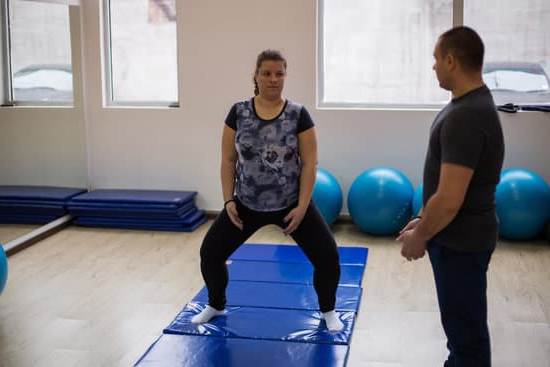Entering the third trimester of pregnancy can be both an exciting and daunting time for expectant mothers. In this stage, the body undergoes significant physical changes, and emotions may fluctuate as the due date draws closer. Understanding what to expect during the third trimester can help prepare for the final stretch before labor and delivery. From physical symptoms to mental health considerations, this article will provide a comprehensive guide to navigating the third trimester of pregnancy.
As women progress through their third trimesters, they often experience a range of physical changes and symptoms that can impact their daily lives. From discomfort to challenges with sleeping, it’s important for expectant mothers to know what is normal and when to seek medical advice during this crucial stage. Additionally, maintaining good nutrition and exercise habits is essential for both maternal and fetal well-being in these final weeks.
Beyond physical health, emotional and mental well-being are also important factors to consider during the third trimester. Hormonal shifts, anxiety about labor and delivery, as well as preparing for parenthood are all part of the emotional landscape in the home stretch of pregnancy. With proper support and coping strategies, expectant mothers can navigate these challenges with confidence.
Physical Changes and Symptoms in the Third Trimester
As you progress through your third trimester pregnancy, your body will undergo significant physical changes to accommodate your growing baby. Here are some common physical changes and symptoms you may experience during this stage:
1. Increased weight gain: By the third trimester, you may notice a significant increase in your weight as your baby continues to grow. It’s important to monitor your weight gain and discuss any concerns with your healthcare provider.
2. Swelling: Many women experience swelling in their feet, ankles, and hands during the third trimester due to increased fluid retention. To alleviate swelling, try elevating your legs whenever possible and avoiding standing for long periods of time.
3. Shortness of breath: As your uterus expands, it can put pressure on your diaphragm, leading to feelings of breathlessness. This is a normal symptom of the third trimester, but if you experience severe shortness of breath or chest pain, seek medical attention immediately.
4. Back pain: The added weight and shift in your center of gravity can lead to increased back pain during the third trimester. Practice good posture, use a support pillow when sitting or lying down, and consider prenatal massage or chiropractic care to help alleviate discomfort.
5. Braxton Hicks contractions: These practice contractions are common in the third trimester as your body prepares for labor. While they may be uncomfortable, they are typically not cause for concern unless they become regular or increasingly intense.
It’s important to remember that every pregnancy is unique, so not all women will experience the same physical changes and symptoms during the third trimester. Be sure to communicate any concerns with your healthcare provider and seek their guidance on managing these physical changes effectively.
Emotional and Mental Health in the Third Trimester
The third trimester of pregnancy can be an exciting time as you prepare for the arrival of your baby, but it can also come with its own set of emotional and mental health challenges. As your due date approaches, you may experience a wide range of emotions, from excitement and anticipation to anxiety and fear. It’s important to prioritize your emotional and mental well-being during this time to ensure a healthy pregnancy for both you and your baby.
One common issue that many women face in the third trimester is increased anxiety about labor and delivery. It’s completely normal to have concerns about the birthing process, especially if this is your first child. Talking to your healthcare provider or a mental health professional can help alleviate some of these fears and provide you with coping strategies to manage any anxiety or stress.
In addition to concerns about childbirth, hormonal changes during the third trimester can also impact your emotional well-being. Many women experience mood swings, irritability, or feelings of sadness during this time.
Taking time for self-care activities that bring you joy and relaxation, such as prenatal yoga or meditation, can help improve your emotional state. Additionally, maintaining open communication with your partner, friends, and family members about how you’re feeling can provide invaluable support as you navigate the final weeks of pregnancy.
| Emotional Health Concerns | Mental Health Strategies |
|---|---|
| Increased anxiety about labor and delivery | Talking to healthcare provider or mental health professional; developing coping strategies |
| Hormonal mood swings | Engaging in self-care activities such as prenatal yoga or meditation; Open communication with support network |
As the article title indicates on Third Trimester Pregnancy When it comes to caring for yourself during the third trimester take note above that Pregnant Women should be aware that heightened emotional sensitivity.Healthcare providers encouraged Prenatal exercises techniques aside from Yoga & meditation on dealing with hormonal mood swings These information will benefit women at this sensitive stage in motherhood.
Nutrition and Exercise Tips for the Third Trimester
As you enter the third trimester of your pregnancy, it is essential to focus on nutrition and exercise to ensure both you and your baby remain healthy. During this stage of pregnancy, your baby is growing rapidly and gaining weight, so it’s important to maintain a balanced diet that provides all the necessary nutrients. Additionally, staying physically active can help prepare your body for labor and delivery.
In terms of nutrition, it’s crucial to focus on consuming nutrient-dense foods that provide essential vitamins and minerals for both you and your baby. This includes foods high in calcium, iron, folic acid, and protein. Incorporating plenty of fruits, vegetables, whole grains, lean proteins, and healthy fats into your diet can help support the development of your baby while also keeping you strong and energized.
When it comes to staying active in the third trimester, it’s important to listen to your body and engage in exercises that are safe for pregnancy. Low-impact activities such as walking, swimming, prenatal yoga, or gentle stretching can help improve circulation, reduce swelling and discomfort, and prepare your body for childbirth. It’s recommended to avoid high-impact activities or exercises that pose a risk of falling or injury.
As you approach the final weeks of your pregnancy journey during the third trimester, focusing on maintaining a healthy diet and staying physically active can contribute to a smoother labor experience and promote overall well-being for both you and your baby. Always consult with your healthcare provider before making any significant changes to your diet or exercise routine during this stage of pregnancy to ensure safety and proper guidance.
Preparing for Labor and Delivery in the Third Trimester
As you enter the final stretch of your pregnancy, it’s important to start preparing for labor and delivery. This includes familiarizing yourself with the signs of labor, creating a birth plan, and getting your hospital bag ready. Many women experience a mix of excitement and anxiety as they approach their due date, but educating yourself about what to expect can help alleviate some of the nerves.
One important aspect of preparing for labor and delivery is understanding the signs that indicate labor is approaching. These signs can include regular contractions, your water breaking, and a bloody mucus discharge known as the “bloody show.” It’s also a good idea to discuss these signs with your healthcare provider so you know when it’s time to head to the hospital or birthing center.
Creating a birth plan is another crucial step in preparing for labor and delivery. A birth plan outlines your preferences for things like pain management, who will be present during the birth, and any special considerations you have for after the baby is born. While it’s important to remember that labor doesn’t always go according to plan, having a birth plan can help ensure that your healthcare team understands your wishes during this important time.
| Signs That Labor Is Approaching | Creating a Birth Plan |
|---|---|
| Regular contractions | Pain management preferences |
| Water breaking | Who will be present during the birth |
| Bloody mucus discharge (“bloody show”) | Special considerations after the baby is born |
Common Concerns and Complications in the Third Trimester
During the third trimester of pregnancy, it is common for women to experience a variety of concerns and potential complications. It is important for expectant mothers to be aware of these issues in order to seek proper medical care and take necessary precautions. Some common concerns and complications during the third trimester include:
Gestational Diabetes and Preeclampsia
One of the most significant concerns during the third trimester is gestational diabetes and preeclampsia. Gestational diabetes can occur when the body cannot produce enough insulin during pregnancy, leading to high blood sugar levels. Preeclampsia, on the other hand, is a condition characterized by high blood pressure and signs of damage to other organ systems, most often the liver and kidneys. Both conditions require close monitoring by healthcare providers to ensure the well-being of both mother and baby.
Preterm Labor
Preterm labor, also known as premature birth, can occur in some pregnancies during the third trimester. This is defined as labor that begins before 37 weeks of pregnancy. It is essential for expectant mothers to be aware of the signs of preterm labor, such as regular contractions or low backache, and seek immediate medical attention if these symptoms arise.
Decreased Fetal Movement
Another concern in the third trimester is decreased fetal movement. While it’s normal for fetal movement to change as the baby grows and runs out of space in the womb, a noticeable decrease may indicate potential problems with the baby’s well-being. Expectant mothers should pay attention to their baby’s movements and contact their healthcare provider if they notice a significant reduction.
Being aware of these common concerns and complications in the third trimester allows expectant mothers to stay informed about potential issues that could arise during this crucial stage of pregnancy.
It’s essential for pregnant women to maintain regular check-ups with their healthcare provider throughout their third trimester pregnancy to monitor both their health and that of their growing baby while possibly addressing any potential concerns or complications that may arise throughout this period.
Tips for Comfort and Sleep in the Third Trimester
During the third trimester of pregnancy, discomfort and difficulty sleeping can become more pronounced as your body continues to adjust to the growing bump and preparing for labor. Here are some tips to help you find comfort and get better sleep during this stage of pregnancy:
1. Invest in a pregnancy pillow: A pregnancy pillow can provide much-needed support for your back, hips, and belly, making it easier to find a comfortable sleeping position. Look for a full-body pillow or a C-shaped pillow designed specifically for pregnant women.
2. Practice relaxation techniques: As your due date approaches, it’s common to feel anxious or overwhelmed. Practicing relaxation techniques such as deep breathing, meditation, or gentle yoga can help calm your mind and prepare your body for sleep.
3. Establish a bedtime routine: Creating a consistent bedtime routine can signal to your body that it’s time to wind down and prepare for sleep. Consider incorporating activities such as taking a warm bath, reading a book, or listening to soothing music before bed.
4. Adjust your sleeping environment: Make sure your bedroom is conducive to sleep by keeping the room dark, cool, and quiet. Using blackout curtains, white noise machines, or earplugs can help create an optimal sleep environment.
5. Stay active during the day: Regular physical activity during the day can help reduce discomfort and improve sleep quality at night. Aim for gentle exercises such as walking or swimming, but be sure to listen to your body and avoid overexertion.
By practicing these tips for comfort and better sleep during the third trimester of pregnancy, you can make this stage more manageable and restful as you prepare for the arrival of your baby.
What to Pack in Your Hospital Bag
When the third trimester of pregnancy rolls around, it’s important to start preparing for the arrival of your little one. One essential task to tackle during this time is packing your hospital bag. It’s a good idea to have this ready to go well in advance, just in case you need to head to the hospital earlier than expected. Here are some key items to include in your hospital bag for the third trimester.
Essentials for Mom
First and foremost, don’t forget to pack your important documents, such as your driver’s license, insurance information, and any necessary hospital paperwork. Comfortable clothing and toiletries will also be crucial for your stay at the hospital. Consider packing items like a bathrobe, slippers, a nursing bra if you plan on breastfeeding, and a hair tie or headband.
Comfort Items
Labor can be a long and challenging process, so having some comfort items on hand can make a big difference. Consider bringing along items like your own pillow, a cozy blanket, and soothing music or meditation apps. Some moms also find relief from labor pains with tools like massage rollers or essential oils for aromatherapy.
Supplies for Baby
Of course, don’t forget about essentials for your newborn. Pack several changes of baby clothes, receiving blankets, diapers, wipes, and any special items you want for the first moments with your new arrival – whether it’s a special swaddle blanket or a going-home outfit. Additionally, make sure you have an approved car seat installed in your vehicle before heading to the hospital.
By being prepared with these essentials in your hospital bag during the third trimester pregnancy period, you’ll be able to focus on welcoming your new addition with peace of mind.
Advice for Partners and Support Persons in the Third Trimester
In conclusion, the third trimester of pregnancy can be both an exciting and challenging time for expectant parents. As the due date approaches, it’s common to experience a range of physical and emotional changes. From swollen feet to mood swings, these symptoms are all a normal part of the process. It’s important for both partners to offer support and understanding during this time.
One of the best ways partners and support persons can provide assistance is by actively participating in preparing for labor and delivery. Attending childbirth education classes together, creating a birth plan, and discussing expectations for the big day can help ease anxieties and make the experience more manageable. Additionally, offering a listening ear and providing reassurance can greatly benefit the pregnant person’s emotional well-being during this period.
In addition to offering emotional support, partners should also remember to take care of themselves during this time. Ensuring proper nutrition, getting regular exercise, and seeking their own support network can make a significant difference in helping both individuals feel prepared for the arrival of their new baby. Ultimately, approaching the third trimester with patience and understanding can strengthen your bond as a couple during this pivotal time in your lives.
Frequently Asked Questions
Is 3rd Trimester 27 or 28 Weeks?
The 3rd trimester is typically considered to start at 28 weeks of pregnancy. This is the final stretch before the baby arrives, and it’s a time when the baby grows rapidly and the mother experiences various physical changes.
What Should I Expect in Third Trimester?
In the third trimester of pregnancy, expect to feel your baby move more frequently as they continue to grow. You may experience discomfort due to the increasing size of your belly, shortness of breath, fatigue, and difficulty sleeping. It’s also common to have increased bathroom trips and Braxton Hicks contractions.
What Positions Should You Avoid While Pregnant?
During pregnancy, it’s best to avoid lying flat on your back for an extended period of time as this can put pressure on major blood vessels and restrict blood flow to your uterus. It’s also recommended to avoid any positions that put excessive strain on your abdomen or require intense twisting or bending movements.
These precautions help ensure the safety and comfort of both the mother and the growing baby.

Welcome to my fertility blog. This is a space where I will be sharing my experiences as I navigate through the world of fertility treatments, as well as provide information and resources about fertility and pregnancy.





